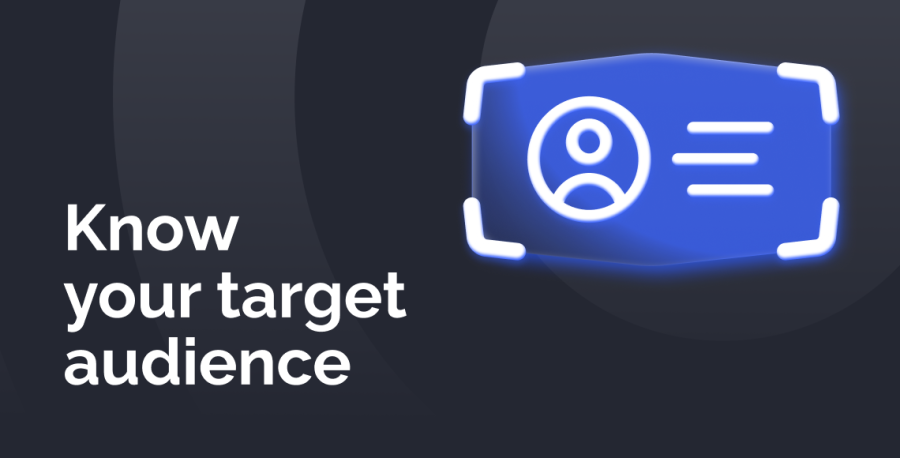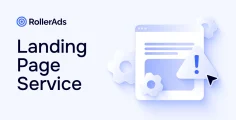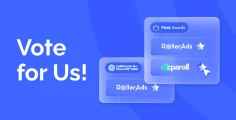A well targeted audience gives meaning to your marketing endeavors and guides you firmly towards profit. Instead of trying to please everyone, it is generally better to focus on a segment, which fits your campaigns like a glove. In this article, you are going to learn why so, how to target your audience right, and how to complement your targeting goals with the right set of software.
Target vs. Mass Marketing
Marketing may look like a piece of cake at first glance: the more people know about a product — the better. That’s the core idea of mass marketing, which used to be the go-to solution before the internet. However, the advent of the worldwide web facilitated target marketing, which is a more neat alternative.
People share gigabytes of data while using the internet like geolocation, hardware, software, cookie-files, and digital fingerprints. Harnessing this kind of data enables high advertising precision. Target marketing boasts several advantages:
- Cost-effectiveness: target and mass marketing may generate the same number of impressions, but targeted ads are shown to the potential prospects only, resulting in more clicks.
- Personal touch: the wider ad coverage is — the harder it is to personalize the message. Nowadays, the users do not tolerate generic ads and like to be addressed personally.
- Native character: well targeted ads are perceived as helpful and less intrusive, because they provide a solution to the problem, instead of making a problem out of thin air.
For the target marketing to work, you need to know your audience like the back of your hand. Knowing what the audience wants, fears, and needs is the key to finessing your creatives, landing pages, and campaign settings for the most impact.
How to Get to Know Your Audience
No action is made without motivation of any kind. Even impulse buying can be attributed to the sense of joy and short-term satisfaction. Which is why it is paramount to know the user’s motivation, which usually boils down to some pain points, e.g., fear of missing out (greed), lust for attention (vanity), desire for slacking off (sloth). Pain points alone are not enough to make a portrait of your audience, so consider the following:
- Demographics: nations, male-female ratio, average age, lifespan
- GEO: languages, history, climate, geography, income inequality, connection speed and quality
- Politics: order, (in)stability, laws, ad restrictions
- Culture: customs & habits, folklore, holidays
Knowing all these details become especially important whenever you try out a completely new region. For instance, a European affiliate promoting a beauty product for Saudi Arabia may not know that there is a strict gender segregation, so the ads must be appropriate for both communities. Since it is an Islamic country, using the sacred green color can be risky. Finally, the Arabic language is read from right to left, which poses a challenge to your website layout while localizing it.
Tools to Understand the Audience
One of the best tools out there to comprehend your audience is Google Analytics (GA). It’s free and provides the data on demographics, users’ interests, and behavioral patterns. GA can be complemented with Google Trends (GT) to learn more about search trends and popular topics. GA describes the current situation, while GT tells you what to expect in the future.
Social media analytics is another group of most commonly used tools for deeper insights about the audience. For instance, Meta Business Suite, formerly known as Facebook Audience Insights, is a free tool for gathering data on demographics, interests, and behaviors for Facebook and Instagram — all in one place. Alternatively, you can research people’s profiles and activity manually, to get the idea about their preferences, local influencers, and language specifics.
When it comes to data analytics, it is always good to know where your competitors stand. Such tools as Semrush or SimilarWeb, while not being distributed for free, allow monitoring the activity of the competitors. Moreover, they provide in-depth insight on the audience. The former also records the most popular keywords on Google and Bing, while the latter provides website traffic data.
Don’t forget to try out the marketing automation tools like Marketo and Pardot. They can be used for marketing segmentation, mail personalization, data-driven campaigns, web customization, performance monitoring, and more. If you feel lustful for more automation, check out our article, dedicated to AI applicability for affiliate marketing.
Classic Tools of Marketing
Data gathering is not limited to digital analytical tools. More insights on the target audience can be gained via surveys. If you are not a fan of handwritten questionnaires, use tools like SurveyMonkey to create and distribute surveys.
A more qualitative data can be obtained with the help of focus groups. After all, two heads are better than one. Free flow of ideas within a think-tank can generate a couple of qualitative insights about the target audience.
Probably the most qualitative data can be obtained while interviewing a customer. That’s a good way to broaden your knowledge about the possible pain points, motivators, and buying habits. This can also be helpful to start crafting your potential buyer’s persona, which is useful for organizing and visualizing the information about your target audience.
Last but not least, keep in mind A/B testing. Split-testing is essential for perfecting your campaigns, because the devil is in details. Resist the temptation of cutting the corners here, because A/B testing is the best insurance you can have for your campaigns.
Conclusion
Target marketing is a great way to save on costs, personalize the messages, and attract genuine leads. However, this requires some work to be done beforehand, like creating your customer persona. The prospect’s profile should include such things as demographics, interests, behavioral patterns. Moreover, it is good to know the GEO you are going to work with, because customs, legislation, and politics directly influence your campaign success.
Establishing the target audience does not have to be done manually — you can use software programs and AI. Just remember to always A/B test your ideas, because they might end up not as good as you assumed them to be. Feel free to contact RollerAds if you need any help with targeting the audience, running the traffic, or making creatives.





